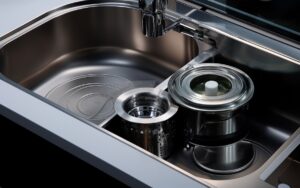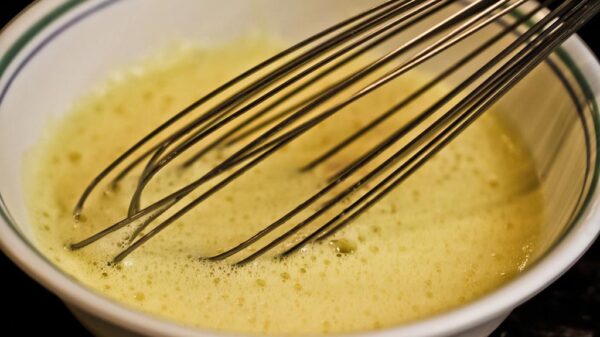Energy Efficient Kitchen Sink Garbage Disposals
Energy-efficient kitchen sink garbage disposals are the unsung heroes of a sustainable kitchen. In today’s world, where every small effort counts in reducing our carbon footprint, having an eco-friendly disposal system is essential. Not only do these disposals make life more convenient, but they also contribute to a greener and cleaner planet. In this guide, we will delve into everything you need to know about energy-efficient kitchen sink garbage disposals, from their benefits to installation and maintenance.
Welcome to the world of energy-efficient kitchen sink garbage disposals, where sustainability meets convenience. In this article, we will explore how these innovative appliances can transform your kitchen into an environmentally responsible space while making your life easier. Let’s dive into the world of energy-efficient kitchen sink garbage disposals and discover how these modern marvels can enhance your kitchen experience.

Understanding Garbage Disposal Systems
Garbage Disposal Systems: Overview and Importance
Garbage disposal systems or units are crucial devices that are primarily attached to a kitchen sink drain to grind up food waste into pieces tiny enough—generally less than 2mm in size—to pass through plumbing. Today, the US is one of the leading users of garbage disposal systems with an estimate suggesting that over 50% of households have one.
The importance of garbage disposal systems cannot be understated as they serve a significant role in waste management. Notably, these systems reduce the amount of organic waste that ends up in landfills, and thereby decrease greenhouse gas emissions. Moreover, by conveniently grinding and flushing food waste, garbage disposals can help to maintain cleanliness in the home, preventing the build-up of waste that could attract pests.
Components and Basic Functioning of Garbage Disposals
Garbage disposal units are made of several central components: the shredder, impellers, flywheel, sink flange, and reset button. The food waste is pushed into the garbage disposal unit’s shredder which grinds it up into tiny pieces. The impellers, which are not sharp, move in a centrifugal motion to force the waste particles down the drain. The flywheel controls the impellers while the sink flange holds the unit in place underneath the sink. A reset button is incorporated to reset the disposal if it gets overloaded and shuts off automatically.
In terms of operation, food waste is put into the unit and then cold water is turned on. The cold water assists in solidifying any fats or grease that may have been contained within the waste, making them easier for the system to flush away. After this, the disposal should be turned on which then grinds and flushes the waste via the plumbing system.
Types of Garbage Disposals
Garbage disposals typically fall under two main categories: continuous feed and batch feed models. Continuous feed models are the most popular and easiest to use. As the name suggests, these models allow for the continuous feeding of waste as long as the unit is on. They are activated via a power switch.
On the other hand, batch feed models require the user to load food waste into the unit, then insert and turn a stopper to activate the disposal. While these models are a bit more cumbersome to use, they offer higher safety levels as they can’t be operated unless the stopper is in place.
An Overview of Standard Garbage Disposal Systems
Leading brands, such as InSinkErator, Waste King, and KitchenAid, are well-known for their top-quality garbage disposal systems across homes in the United States. The InSinkErator Evolution Excel, for example, is a popular choice due to its advanced multistage grinding technology and superior sound-reducing insulation. Meanwhile, the Waste King Legend Series is appreciated for its high-speed motor and easy mounting system.
On the other hand, larger establishments like restaurants and food-service units typically rely on more robust garbage disposal units. The Hobart FD4/500 and the Salvajor 200 are such models, preferred for their ability to handle not only larger waste volumes but also tougher kinds of food waste.
Choosing the Right Disposal
When it comes to energy-efficient kitchen sink garbage disposals, one size doesn’t fit all. It’s essential to select a disposal unit that aligns with your kitchen’s needs and your sustainability goals. Here are some factors to consider:
- Size Matters: Ensure the disposal unit fits comfortably under your sink.
- Power and Efficiency: Look for models with high-performance motors and efficient grinding systems.
- Noise Levels: Opt for units with noise reduction technology for a quieter kitchen.
- Durability: Invest in a disposal with stainless steel components for longevity.
- Warranty: Check for warranties that cover maintenance and repairs.
Installation Process
Installing an energy-efficient kitchen sink garbage disposal may seem daunting, but with the right guidance, it can be a manageable DIY project. Here’s a step-by-step guide:
- Gather Tools and Materials: You’ll need a screwdriver, plumber’s putty, a wrench, and the disposal unit.
- Turn Off the Power: Safety first! Disconnect the power supply to your sink area.
- Remove the Old Disposal: Disconnect the old unit, remove it, and clean the area.
- Mount the New Disposal: Follow the manufacturer’s instructions to secure the new unit.
- Connect the Plumbing: Attach the drainpipes and ensure there are no leaks.
- Test the Disposal: Turn on the power, run water, and check for proper operation.
How It Works
Understanding the mechanics behind your energy-efficient kitchen sink garbage disposal is crucial for efficient and safe use. These units utilize a powerful motor and grinding chamber to break down food waste into tiny particles. The waste is then flushed down the drain, reducing the need for traditional disposal methods and landfills.
Energy Efficiency
Energy-efficient kitchen sink garbage disposals are designed to consume less electricity. They efficiently grind and dispose of food waste, ensuring minimal power usage. By using less energy, you not only reduce your utility bills but also lower your carbon footprint.
Maintenance Tips
Proper maintenance is key to extending the life of your energy-efficient disposal. Here’s how to keep it in top shape:
- Regular Cleaning: Run cold water while the disposal is on to clean and prevent clogs.
- Avoid Hard Objects: Never put hard objects like bones or fruit pits in the disposal.
- Use Ice Cubes: Grinding ice cubes helps keep the blades sharp.
- Check for Leaks: Regularly inspect for any leaks in the plumbing.
- Clean the Baffle: Remove and clean the baffle to prevent odors.

Eco-Friendly Benefits
Energy-efficient kitchen sink garbage disposals offer numerous environmental benefits. By reducing the amount of organic waste sent to landfills, they help decrease methane emissions. They also save water, as less water is needed to flush away food waste. The result? A cleaner, greener planet.
Understanding the Significance of Efficient Garbage Disposal
A robust and efficient garbage disposal mechanism plays a key role in ensuring a sanitary and eco-friendly living environment. It aids in the proper disposal of waste, thereby cutting down the chances of disease spread and pollution. Despite the fact that traditional garbage disposal methods might contribute to escalating greenhouse gas emissions and other environmental concerns, making a switch to greener waste disposal procedures has emerged as a crucial consideration worldwide for residences, businesses, and governments alike.
Energy-efficient kitchen sink garbage disposals are a wise investment for both your kitchen and the environment. They not only simplify your life but also contribute to a more sustainable future.

FAQs
Q: Are energy-efficient disposals suitable for all types of sinks?
A: Yes, these disposals can be installed in most sink types with the right configuration.
Q: Can I put coffee grounds in the disposal?
A: Yes, coffee grounds are safe for most disposals and can even help eliminate odors.
Q: Do energy-efficient disposals make a lot of noise?
A: No, many models are designed to operate quietly, thanks to advanced noise reduction technology.
Q: How long does an energy-efficient disposal last?
A: On average, these units can last 8-15 years with proper maintenance.
Q: Can I install a disposal unit myself?
A: Yes, with the right tools and some DIY skills, you can install it yourself.
Q: What should I do if my disposal gets jammed?
A: Most disposals have a reset button to clear jams. If that doesn’t work, consult the user manual or a professional plumber.
Conclusion
Energy-efficient kitchen sink garbage disposals are more than just a modern kitchen convenience. They are eco-friendly, energy-efficient, and a step towards a sustainable future. By choosing the right unit and maintaining it properly, you can reduce waste, save money, and contribute to a cleaner planet. Upgrade your kitchen with one of these innovative appliances and enjoy a more environmentally responsible lifestyle.














